The history and lore surrounding Japan's samurai warriors is as fascinating as it is complex. Aside from representations in cinema, very few actual photographs depicting the lives of these legendary warriors exist today. This due in part to the fact that photography was an emerging technology during the 19th century, a time of swift political change in Japan that saw dwindling numbers of samurai.
One such collector of these rare pictures is Daniella Dangoor, whose collection will be on view to the public at the London Photograph Fair from May 19–20. Here, Dangoor shares with BuzzFeed News some of her favorite authentic samurai photos and the stories behind them:
Japan had been mostly closed to the outside world for 250 years as an introspective feudal society with rigid castes and rituals. Then US Admiral Perry’s naval expedition forced it to open up. Western powers, driven by commerce, treaty ports, but also science, industry, and innovation, poured in. The rate of change was extraordinary — society convulsed, opposing clans fought, masterless samurai rebelled against an unrelenting modernization, all in just 20 years. Few images show this upheaval; here are some of the few that suggest change.
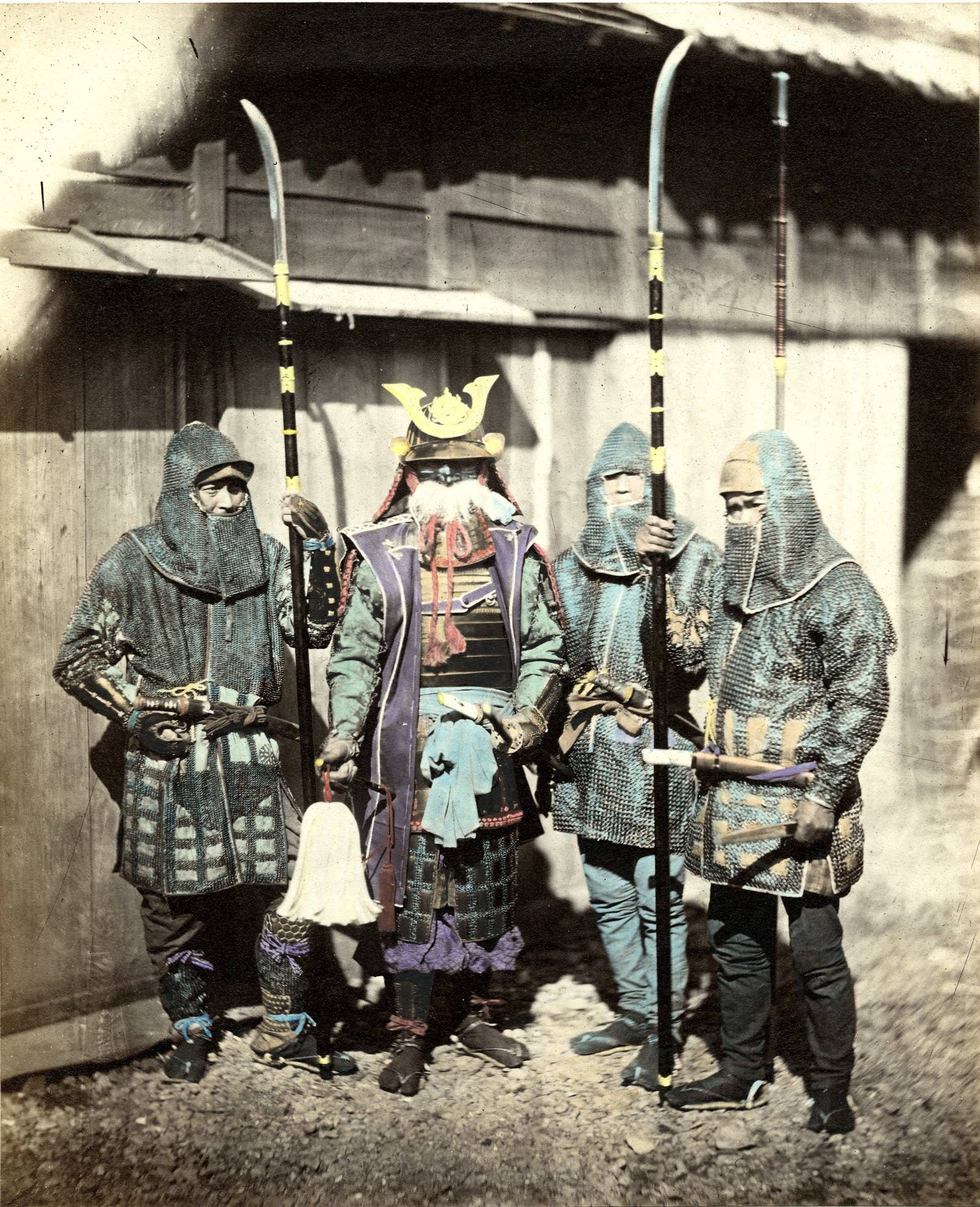
As commander of the shogunal forces posted in nearby Kanagawa, Kubota Sentarô had frequent access to the foreign settlement in Yokohama. He was widely respected — at least among British residents — for his openness to Western ideas, especially in military matters, and he even sought advice on how to train his samurai in modern drill. His preference for British models at a time when the shogunate had committed itself to employing French military advisers probably led to his removal from the Kanagawa command in 1867.
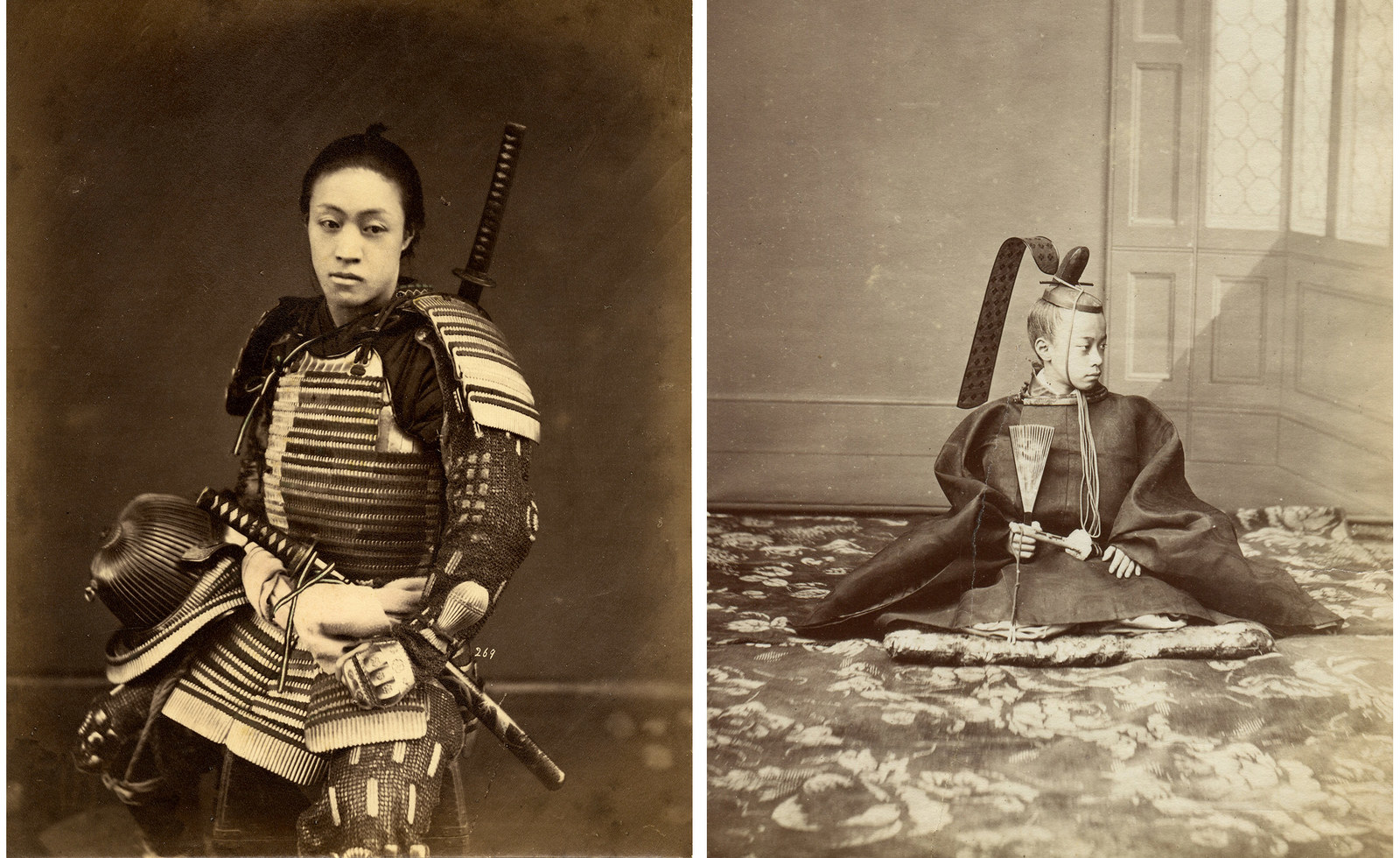
Left: An unusually sensitive portrait taken at a time when the samurai class was about to disappear. Despite the edict of 1871 encouraging — but not enforcing — the abandonment by samurai of their distinctive topknot and swords, the sitter not only wears his hair in the traditional style and sports two swords, but is also dressed in full armor.
This portrait either predates the less equivocal ban in 1876 on wearing swords in public for all except members of the new armed forces and police, or was taken immediately afterward as a keepsake. In any case, by the time this portrait was taken in the mid-1870s, the introduction in 1873 of compulsory military service for all males, regardless of class, had made the samurai an anachronism.
Right: Half-brother of the last shogun and lord of the Mito domain, Tokugawa Akitake (1853-1910) was dispatched to France in 1867 as a special emissary, accompanying the Japanese delegation to the Universal Exposition in Paris. He returned to Japan when the shogun was deposed in 1868.
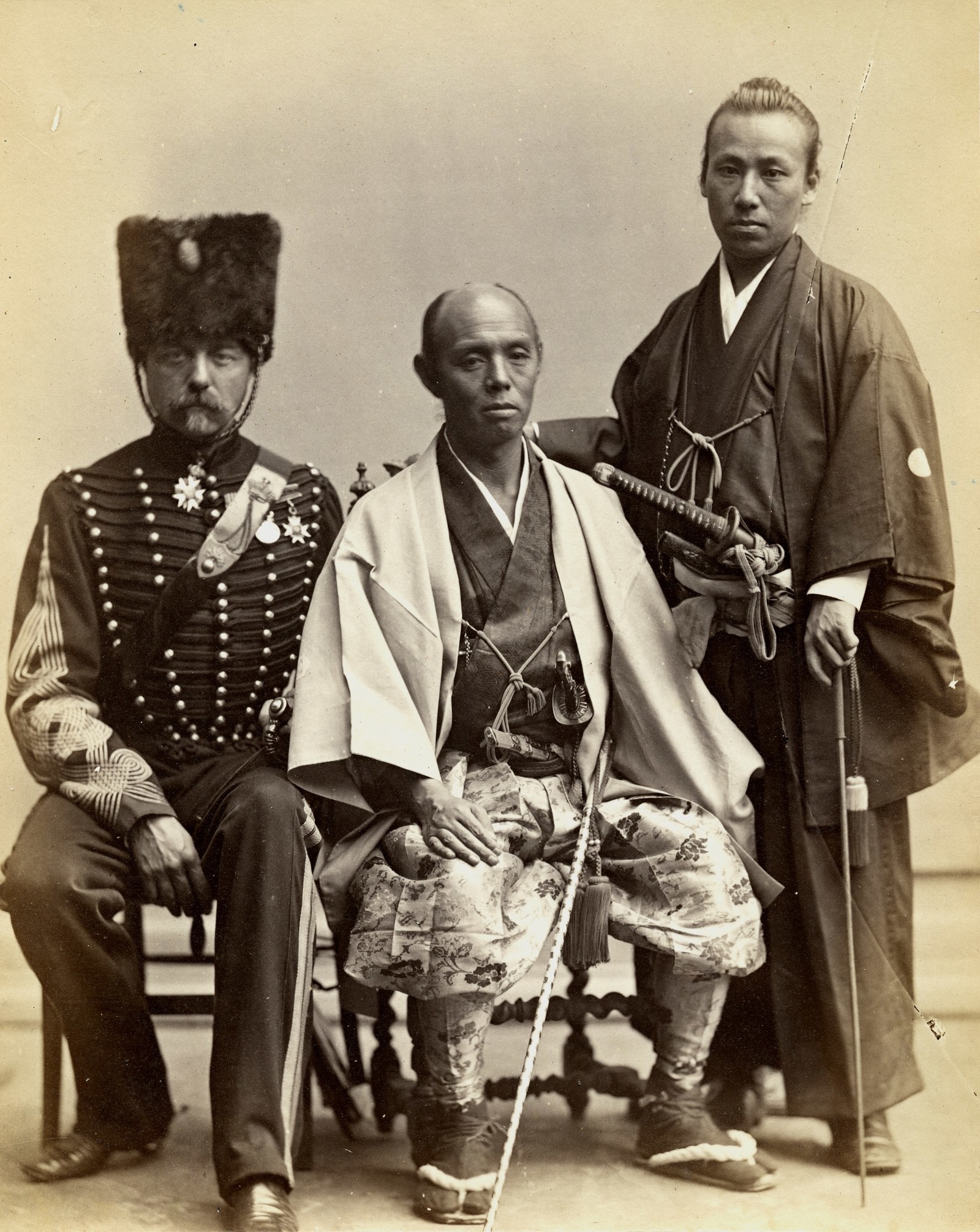
A second shogunal mission headed by Ikeda Nagaoki was sent to France in 1864 in an unsuccessful attempt to rescind the opening of selected Japanese ports to foreign trade. After being received in audience at the Tuileries Palace by the emperor Napoleon III, Ikeda and his entourage visited the nearby studio of Nadar, where their portraits were taken in various outfits.
In this rare photograph from the sitting, the assistant envoy Kawazu Sukekuni (1821–68), seated, and the mission’s metsuke, Kawada Hiromu (1835–1900), standing, are shown with their official escort in Paris, Colonel Sigismond Guillaume de Berckheim (1819–92), commander of the Horse Artillery of the French Imperial Guard.
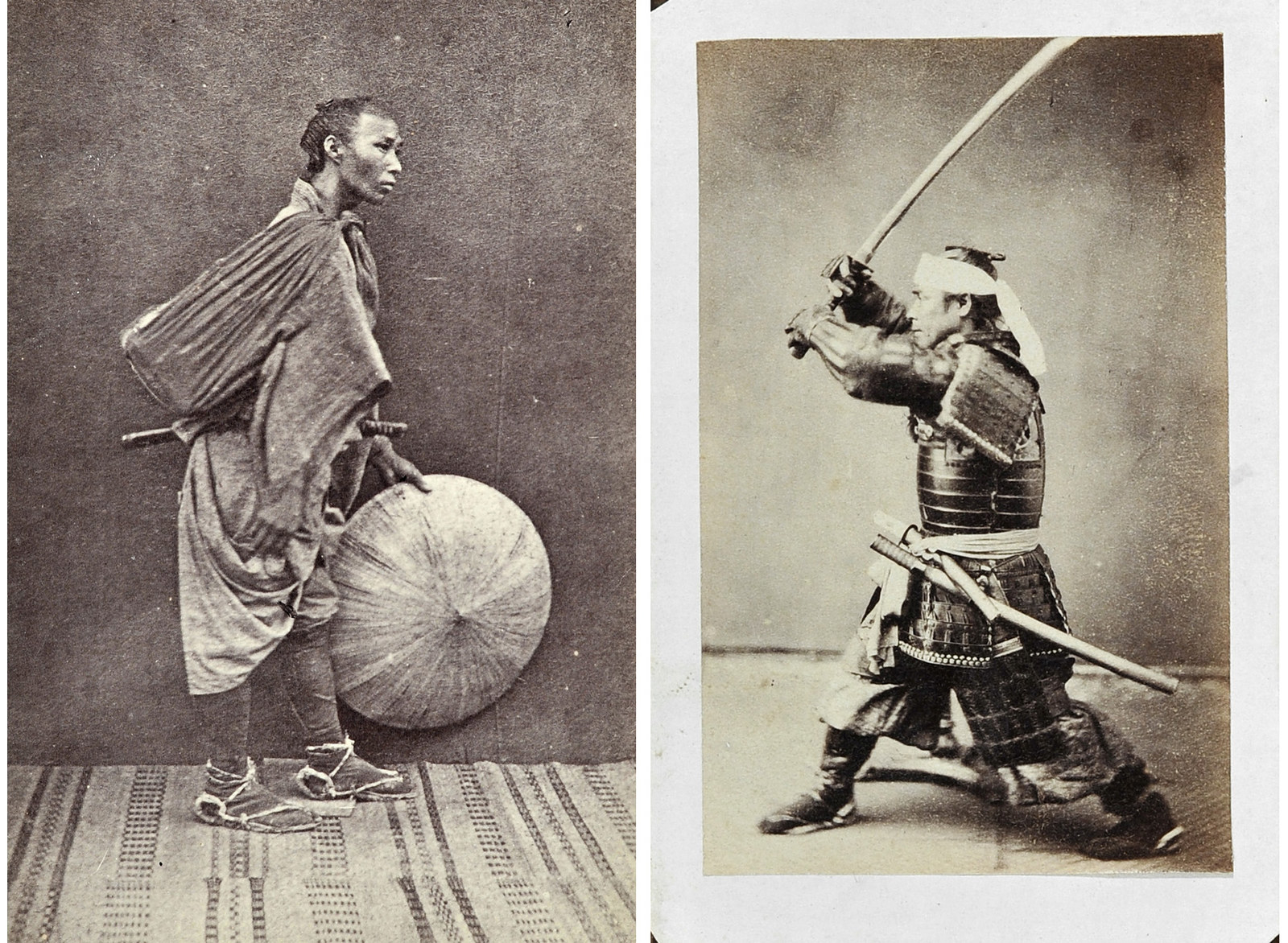
Left: This portrait taken during the early 1870s by the Yokohama photographer Shimooka Renjō — himself born into a family of low-ranking samurai — illustrates the fate of many samurai as the new government stripped them of their status and privileges. Some adopted professions they had been taught to despise, others fell between the cracks and eked out a vagabond existence on the edge of society, offering their swords for hire.
Right: The commander of the Kanagawa garrison.
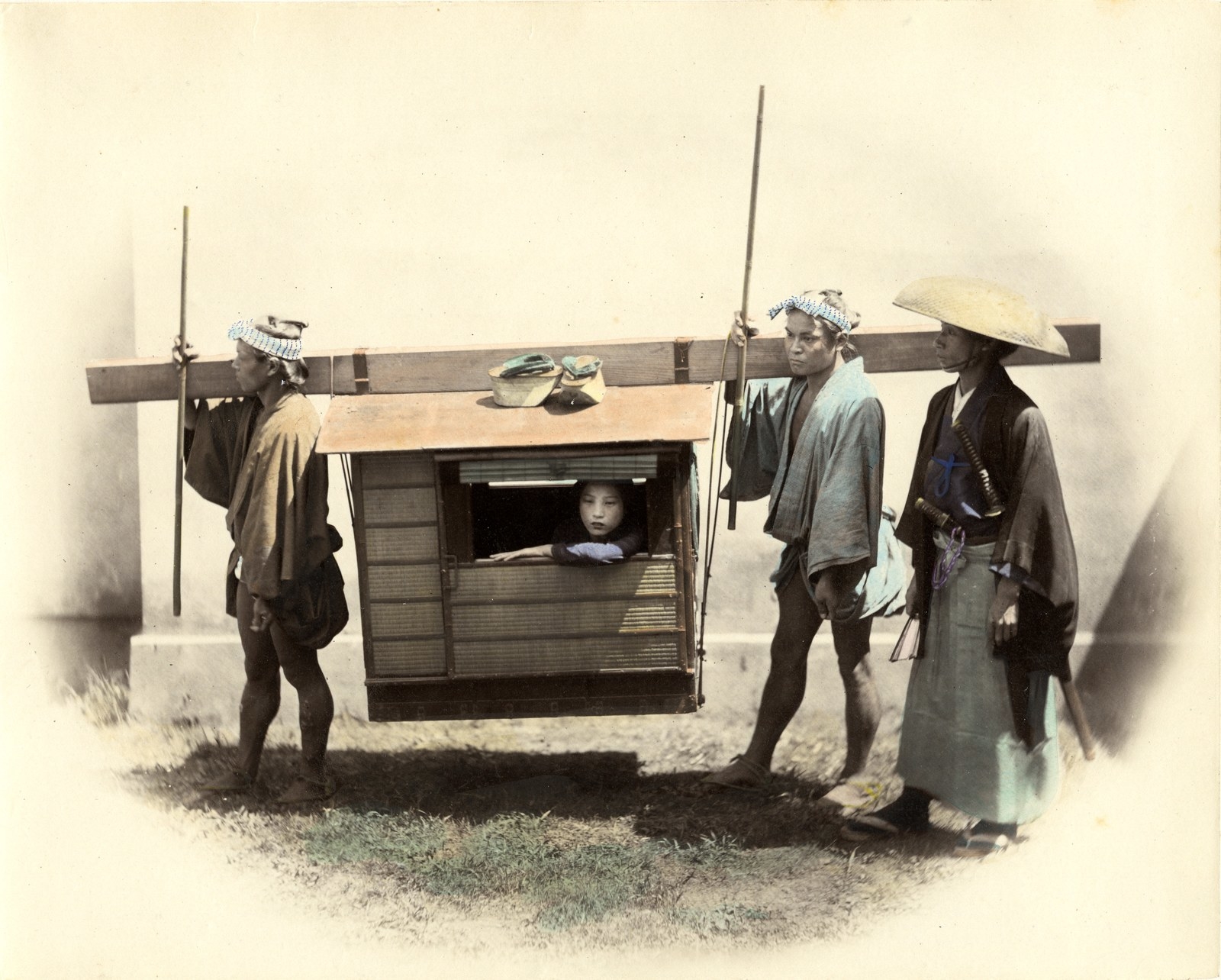
For the warrior class and for the nobility, the most luxurious vehicles were human-powered palanquins called norimono, expensive and with a comfortable interior.
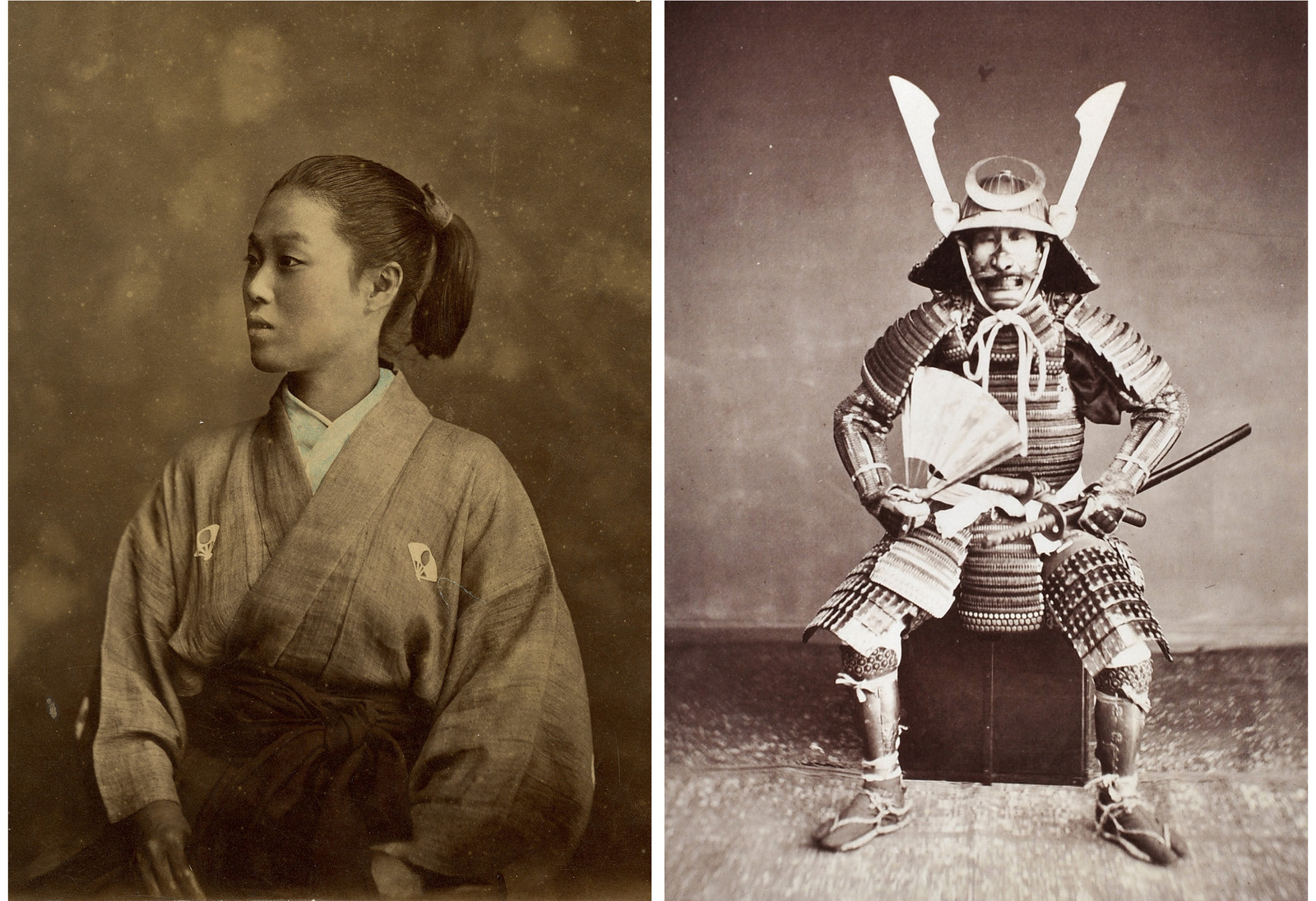
Left: This young woman appears elsewhere in von Stillfried’s portfolio in group photographs of members of the so-called Gekken-kai, or Fencing Association. Founded in 1873 by the kendō master Sakakibara Kenkichi (1830–94), this group repackaged traditional samurai fighting arts into a profitable spectacle for public consumption. Drawn from the samurai class, Sakakibara’s followers included several women, and their demonstrations of skill with the naginata, or pole arm sword, proved a popular draw during the group’s tours across Japan. Although an integral part of the samurai armory, the naginata was more generally accepted as a weapon used by aristocratic women and often formed part of a samurai daughter’s dowry.
Right: Little is known about this striking image of a samurai commander, but the horns and crescent moon on his helmet suggest a senior-ranking samurai.
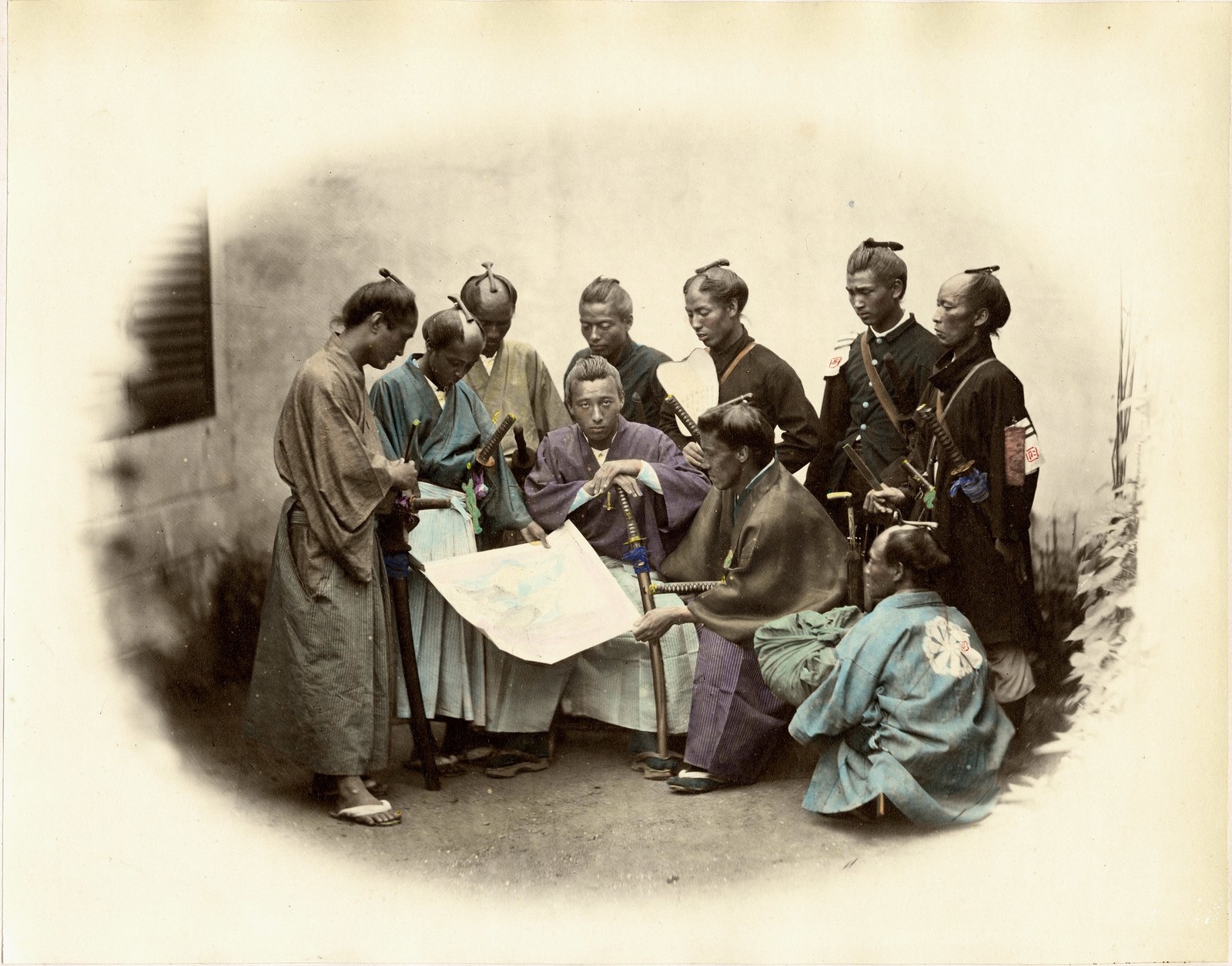
A group of samurai are shown gathered in discussion around a map, those of lower rank in Western-style tunics standing slightly apart as they watch the deliberations, while a servant squats in apparent readiness for his instructions. All eyes are directed toward the map except for those of the central, and most senior, figure, whose head is raised to meet the viewer’s intrusive gaze. Beato’s seemingly innocuous title of "Southern Officers" identifies the sitters as members of one of the Satsuma clans actively opposing the shogunate, and further enhances the viewer’s sensation of having stumbled into a council of war and been detected doing so.
